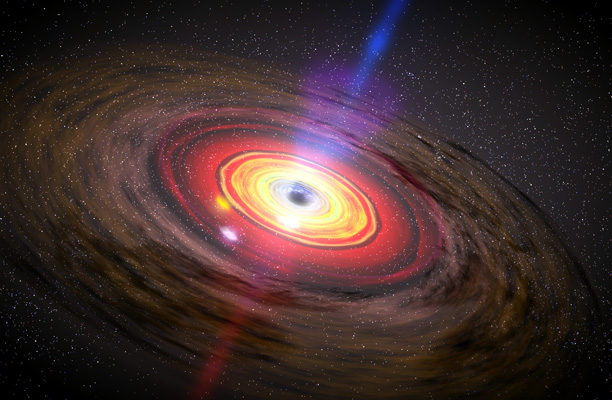
An artist’s rendition of a black hole and its accretion disk.
Image credit: (c) NASA/Dana Berry, SkyWorks Digital
Astronomers caught a supermassive black hole consuming a star that was drifting in space. The star was eaten so fast by the black hole that the Eddington limit –the theoretical maximum speed limit that defines how fast matter can be consumed by a black hole, was briefly exceeded.
NASA’s Swift satellite was the first to observe the event that was then targeted by ESA’s XMM-Newton and JAXA’s Suzaku satellites. At least three more similar events have been observed but this is the only one caught at its peak. Dr. Kara, first author of the relevant study, said that analysis of the data revealed that X-rays were originated from the disk of material close to the black hole. “Before this result there was no clear evidence that we were seeing into the innermost regions of the accretion disk, very close to the central black hole”, she said.
The discovery may help astronomers understand how supermassive black holes form and evolve, growing to several million times the mass of the sun.
Publication: Kara et al. 2016
Source: Independent
